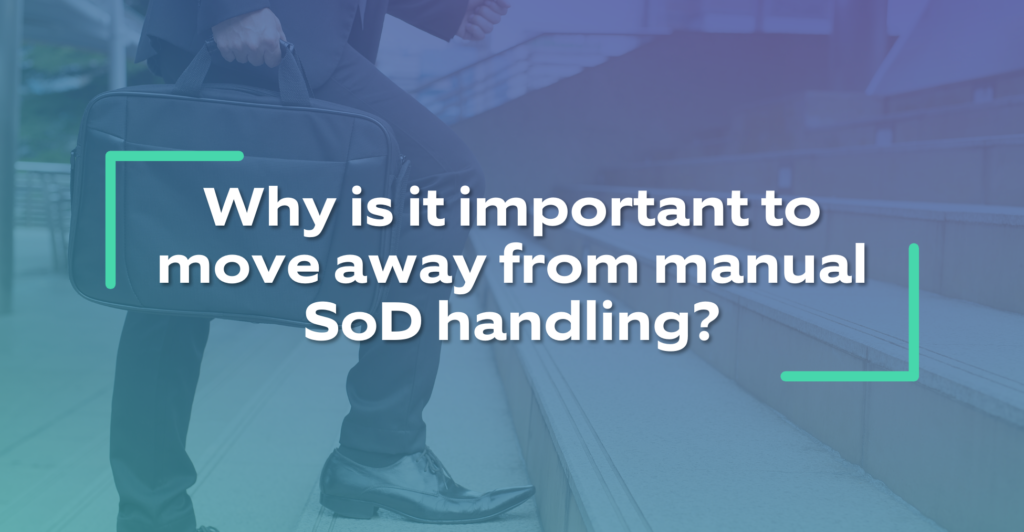Why is it important to eventually advance from manual handling of segregation of duties to automated handling? Why is manual handling of segregation of duties not sufficient in the long run? We understand that this topic is both very relevant to many organizations out there, but also a bit complex. While there are many issues with manual handling of SoD, we would like to focus on a few here. Namely, complexity of roles & systems, human error delayed response and scalability.
Complexity:
Managing SoD risks in SAP is a difficult task, largely due to the intricate nature of role building blocks. Analysing these elements at the object field and activity level is not only highly complex but also time-consuming, making continuous manual analysis a challenging endeavour for ensuring compliance with organizational. Furthermore, manual handling demands a large knowledge of the individual responsible for the process, as this person must understand risk impact and business activities throughout the whole organization to make correct decisions. Of course, this process is not only complicated, but also very time-consuming. Manually pulling the report, analysis and handling for a single risk takes hours.
Human error:
Complexity in combination with a human element also means potential for human error. Each step of the process and following analysis is susceptible to mistakes, leaving the organization with increased risk exposure. It demands that the people responsible know much more about roles, authorizations and excel than if the process was automated. It is highly possible that two people handling the report output would get two different results.
Delay in response:
Even if you are able to do all the activities required for manual handling, the reports and data are already dated. Changes can happen in the meantime, and you have no way of knowing until you do it all again.

Scalability:
Manual handling of SoD is a phase every organization goes through; however, it is inherently less effective compared to automated solutions. As an organization expands, the lacking impact of a manual approach is compounded by increased complexity from more employees, new activities, and broader operational scope. This manual approach doesn’t scale well; it requires greater labor input and becomes increasingly vulnerable to human error and delayed responses. The workload intensifies, necessitating a higher level of expertise from those responsible, making it clear that automation is not just advantageous but essential for sustainable growth and risk management.
Are you interested in discussing whether it is time for your organization to advance and mature your SAP risk management processes? Contact ComplianceNow today for a non-binding live demonstration of our SoD tool, CN Access Control, with a product expert.
Follow us on LinkedIn and get instant access to our latest articles and posts on SAP and compliance.



